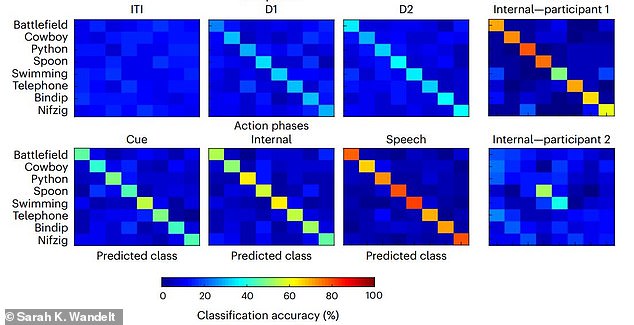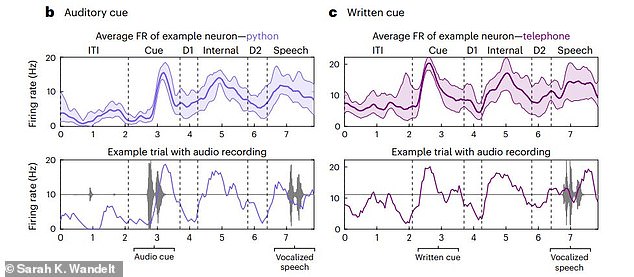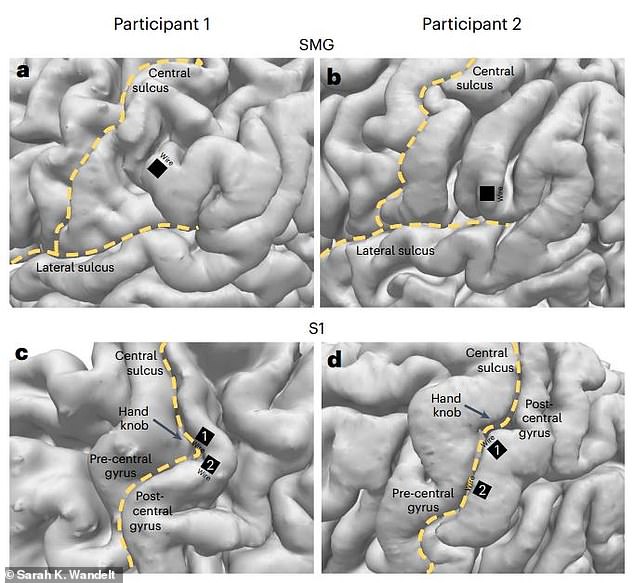- Scientists have developed a technique to decode people’s internal monologue.
- The device works by implanting small electrodes in the brain to collect data.
Scientists are one step closer to reading people’s minds after developing new technology that can decode inner speech with almost 80 percent accuracy.
Some people cannot speak due to illness or injury, but devices called brain-machine interfaces (BMIs) can help patients communicate again.
Also known as “speech decoders,” BMIs can capture brain activity during inner speech (words thought inside the mind without producing any movement or sound) and translate them into language.
Until now, it has been difficult to achieve very precise results.
Researchers at the California Institute of Technology implanted small devices in specific areas of the brains of two participants.
These diagrams show where the scientists implanted small arrays of microelectrodes in the brains of two participants. These matrices collect signals that can be used to decode the internal monologue.
Following a spoken or visual cue, participants were first asked to think of the word (e.g., “spoon,” “python,” or “battlefield”) internally.
In real time, the researchers were able to decode internally spoken words with up to 79 percent accuracy.
This was done through electrodes connected to a part of the brain called the supramarginal gyrus, which plays an important role in processing spoken and written language.
The device was able to decode different internal speech strategies, including reading the word silently and viewing the object representing the word.
The technology works on the same principle as other brain-machine interface devices, such as Elon Musk’s Neuralink.
Neuralink, unlike this device, translates the electronic signals it receives from the brain into a series of motor controls that can be used to interact with machines.
However, it has now been revealed that the first-in-human trial of Neuralink almost came to an end after the patient suffered a life-threatening condition shortly after implantation surgery.

This diagram shows how accurately the scientists were able to decode eight words. The boxes on the far right show how participant one’s (top) internal monologue could be decoded with up to 91 percent accuracy for some words, while participant two’s (bottom) was more difficult to decode.

On trials, participants were given a word and asked to vocalize it or say it internally. The graphs show the activity of a single neuron in your brain while saying “python” or “phone.” In the graphs below you can see the signal and speech sound waves in black.
Although more research is needed to improve the technology’s functionality by testing more participants and new words, the authors said they recommend the supramarginal gyrus as a promising location for BMI.
The scientists wrote in the journal Nature Human Behavior: ‘In this work, an online BMI of inner speech achieved significant decoding… in two participants.
“Online decoders were trained with just eight 1.5-second repetitions per word, demonstrating that significant classification accuracies can be obtained with just a few minutes of training data per day.
“This proof of concept suggests that the supramarginal gyrus may represent a much larger internal vocabulary.
“Our results may translate to people who cannot vocalize speech or who are completely shut down.”


